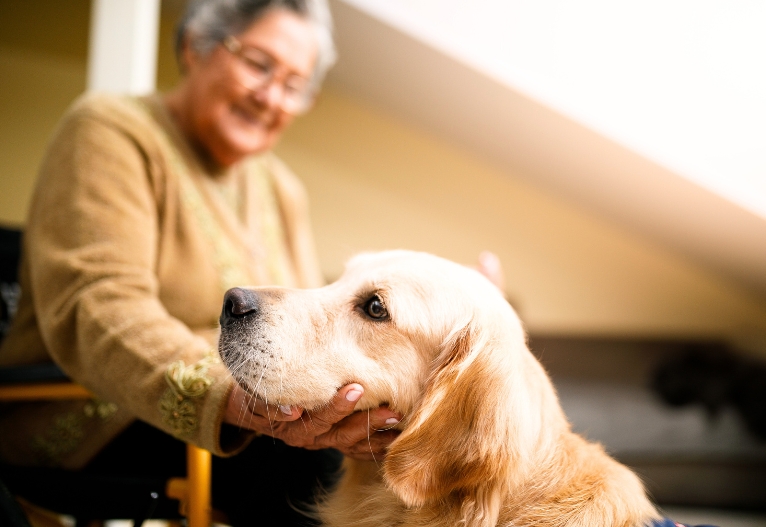We love our furry friends like family, and just like us, they can face a range of health hiccups that affect their wellbeing. Now, fresh data from Australian pet insurance provider Petsy has pulled back the curtain on the most common illnesses affecting our beloved pups – and it turns out, designer breeds are copping the brunt of it.
From tummy troubles to skin flare-ups and ear infections, the new claims data gives dog owners a heads-up on what to watch for. It also highlights the breeds most likely to experience these issues and the average age when problems tend to pop up.
Designer breeds and digestive drama
Sitting right at the top of the list? Gastrointestinal and digestive disorders – with the majority of claims coming from Cockapoos (Cocker Spaniel x Poodle). These curly cuties tend to experience stomach issues early, with most claims made around 2.4 years of age.

Next up are skin disorders, especially common among Tamaruke Miniatures – a designer mix of Labrador or Poodle with smaller breeds like the Mini Poodle, Cavalier King Charles Spaniel or Dachshund. Despite their reputation for being low-shedding and hypoallergenic, their dense, curly coats can actually make them more prone to skin irritations. Most skin-related claims are made at just 2.6 years.
And if you’ve ever shared your home with a floppy-eared floof like a Sheepadoodle (Old English Sheepdog x Poodle), you probably won’t be shocked to hear ear disorders are third on the list. These dogs tend to develop problems as young as 2.2 years, thanks to their closed, warm ear canals – the perfect breeding ground for infections.
Working breeds and purebreds join the list
Further down the list, we start to see a mix of working and purebred dogs making an appearance.
Blue Heeler crosses (including Aussie Cattle Dogs) are prone to joint and limb disorders, particularly in their legs, hips and shoulders. With all that energy and drive, these dogs often push their bodies hard, and joint issues tend to show up by 3.2 years.

British Bulldogs, with their trademark squishy faces, top the list for eye problems. From inward-turning eyelids to dry eye and cherry eye, these health issues typically start around 3.1 years old.
Meanwhile, White Swiss Shepherds, known for their active nature, rack up the most claims for paw injuries like torn nails, grass seeds or even paw cysts. These injuries often occur around 2.9 years of age.
Big, loveable Saint Bernards come in with the oldest average age at 4.6 years for claims related to growths, tumours and cysts – which could be linked to their large size and genetic predisposition to bone cancer and other health concerns.

Pomeranians, small but mighty, are more prone to respiratory issues, especially around 2.8 years. Their tiny windpipes and short muzzles can make them more susceptible to coughing and breathing problems.
And rounding out the list, Hungarian Vizslas are most likely to suffer from urinary issues, often developing bladder or kidney problems like stones and infections around 2.4 years.
Be informed and prepared
Monica Limanto, Founder of Petsy, says our love for pets runs deep – and so should our understanding of what each breed may face.
“Choosing the right breed means knowing what you’re signing up for health-wise. Every dog deserves the chance to live a long, happy life, and regular vet visits, good nutrition and early insurance can go a long way.”
Monica Limanto
With vet services making up around 14% of Aussie pet household spending, Monica reminds pet owners that prevention is key, and insurance can offer much-needed peace of mind.
Monica’s 7 top tips for keeping your dog happy and healthy
- Get those vet check-ups – At least once a year (more for puppies or older dogs) to catch issues early and keep up with vaccines and parasite control.
- Groom regularly – Every 6–12 weeks is ideal for most breeds, and long-haired dogs benefit from frequent brushing to avoid matting and skin issues.
- Exercise daily – Tailor it to your breed! A Dachshund might only need 30–60 mins a day, while a Border Collie thrives on a couple of hours of active play.
- Feed a balanced diet – High-quality protein, essential nutrients and appropriate meal sizes help support muscle, organ and overall health.
- Avoid toxic treats – Keep chocolate, onions, grapes, macadamias and even cooked bones out of reach. They can be seriously harmful.
- Watch for changes – Lethargy, vomiting, excessive thirst, or a drop in appetite? Don’t wait. A vet visit could save their life.
- Insure early – Taking out pet insurance while your dog is young and healthy means better coverage and less financial stress if health issues pop up.
Most common dog health claims according to Petsy
| Illness / Disorder | Breed Most Affected | Average Age (Years) |
|---|---|---|
| Gastro-intestinal / Digestive issues | Cockapoo | 2.4 |
| Skin disorders | Tamaruke Miniature | 2.6 |
| Ear disorders | Sheepadoodle | 2.2 |
| Leg, hip & shoulder disorders | Blue Heeler Cross | 3.2 |
| Eye disorders | British Bulldog | 3.1 |
| Paw/Claw injuries | White Swiss Shepherd Dog | 2.9 |
| Tumours, cysts & growths | Saint Bernard | 4.6 |
| Respiratory disorders | Pomeranian | 2.8 |
| Urinary system disorders | Hungarian Vizsla | 2.4 |
While this list offers a useful snapshot of current claims trends, it’s important to remember that every dog is different. Genetics, environment, lifestyle – they all play a part in your pup’s health. So take this info as a helpful guide, not a rulebook.
Petsy does point out that this research is a snapshot, reflecting current trends over a recent claims period, which may vary year on year. It’s not intended to suggest that these breeds are more prone to illness because beed-specific health risks can depend on a variety of factors including genetics, lifestyle and environment.
And as always, if something doesn’t seem right with your dog, your local vet is the best place to start.
Does this list ring true for your pup? Tell us more in the comments below.
















-

-
-
BP517427, NSW
- 04 Jun 2025
👍
0 Likes
-

-
-
BH516518, VIC
- 31 May 2025
👍
0 Likes
-

-
-
BH516394, WA
- 28 May 2025
👍
0 Likes
-

-
-
BH516536, TAS
- 24 May 2025
👍
0 Likes
-

-
-
BH516443, QLD
- 23 May 2025
👍
0 Likes
-

-
-
BH516536, TAS
- 22 May 2025
👍
0 Likes
Post a commentTo post a review/comment please join us or login so we can allocate your points.